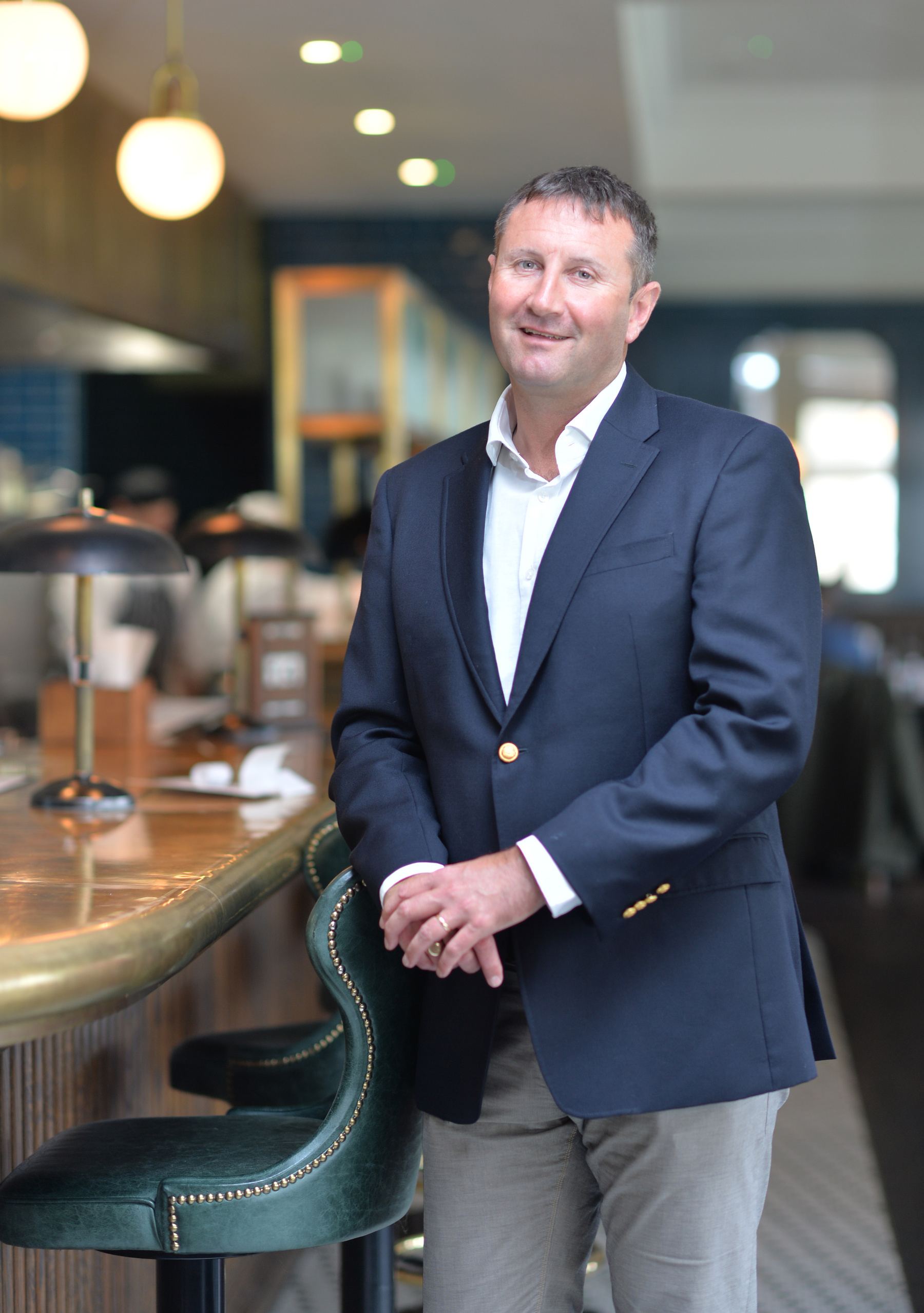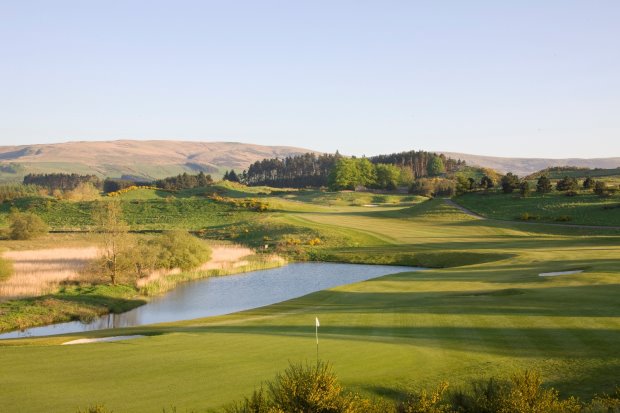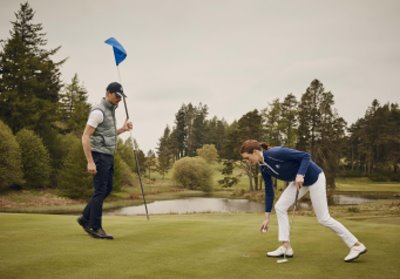
GolfBusinessNews.com talks to Gary Silcock, Director of Golf at Gleneagles about the significant enhancements that have been made to the golf courses on the Perthshire Estate, and how it is building a team for the future…
What has been your strategy post Ryder Cup?

We had a clear strategy after The Ryder Cup in 2014 to create and deliver a detailed growth plan that was sustainable. We were targeting growth, but not at all costs. We have always believed we offer something very special and different to our competitors, so we saw no need to reduce pricing to drive new business.
We set about creating a plan that focused on what we had, how we could make it better, and how we could better engage with our customers. We focused on enhancing the two key elements of golf at Gleneagles, namely the 54 holes of golf on the estate and the experience we offer our guests. We wanted to occupy a clear leadership position in the UK market, and internationally.
What did you do first?
The history and authenticity of Gleneagles underpinned our new thinking and we went right back and looked at how James Braid – the architect of the King’s and Queen’s courses – wanted them to play. We also consulted with our current members to understand how they viewed the golf experience.
There was a common link in both, and it was clear that by creating a detailed plan that would see every bunker enhanced across the King’s and Queen’s, we would not only see both courses restored to James Braid’s original vision, but also significantly improve playing quality, something our members had also highlighted.
How has the work progressed?
Two years on and we have now re-lined every bunker across our 54 holes, with Capillary Concrete used on The King’s and The Queen’s courses and Better Billy liners used on the PGA Centenary Course, which has transformed their playing condition and drainage properties. It has also allowed us to align the look of the bunkers back to the vision of Braid on both the King’s and Queen’s.
Braid wanted bunkers to offer golfers a ‘glimpse’ of sand, whilst remaining challenging and aesthetically pleasing to the eye. We’ve now achieved this, bringing the courses back to how they were meant to be seen and played.
It is also worth noting Braid’s bunker designs at Gleneagles were originally based on the courses supporting summer play only, so to bring them back to his original design concept, and make them playable all-year-round and maintenance-friendly, is a huge achievement.
Did you limit your course enhancements to the bunker renovation work?
No, this work led us to change the fairways back to Braid’s vision too. We no longer have fairway bunkers sitting in the rough, our bunkers are now in play and they are sitting in the fairways, which in some cases have been made 40% wider. This is great news for the amateur golfer because they are now effectively further away from the rough, making the whole playing experience at Gleneagles more enjoyable.

How would you describe the three courses at Gleneagles now?
We had been describing Gleneagles as a world-class golf venue with three championship golf experiences – which of course it is – but that doesn’t tell you what our courses are really about.
Visitors to Gleneagles expect our courses to be of a tournament standard – that is what our guests are paying for – but it is vitally important we communicate the style of our courses, and what the experience of playing at Gleneagles is really like.
The Queen’s is a heathland course through trees and heather and we wanted to re-establish this fact. Also, looking back at the history of the King’s, it was originally created as an inland links, and as such this year we have started to get the fairway cut levels back to 8mm – in line with seaside links courses.
Looking over our shoulder to The Ryder Cup, we have a Jack Nicklaus signature course in the PGA Centenary. We thought how do we make this a ‘modern classic’ that is in keeping with a resort-style course?
We are now raising the height of the fairway cut to 15mm, as opposed to 12mm, so now golfers will play off more of a ‘carpet’ on the fairways, the ball will be played more in the air as it is a modern course, and we are creating more defined edging and definition to each hole.
We want the PGA Centenary to be emerald green, have white sand bunkers and be unashamedly modern and akin to its heritage of staging The Ryder Cup.

Is it just about the products? What about the service?
Our golf operations team has been completely re-structured to align itself to what customers expect from a world-class golf operation, like Gleneagles. We have been very clear with our recruitment requirements over the past few years in that we wanted people joining the golf team that had experience in delivering a five-star product.
One of many key appointments was David Blackadder from Jumeirah Golf Estates in Dubai, as our Golf Operations Manager. David has also had experience at Loch Lomond Golf Club and Kingsbarns, so understands what customers expect from a five-star operation.
David also now has two managers beneath him, which is a structure Gleneagles has never had before, and this is allowing us to increase the levels of customer service and satisfaction across the 54 holes. Thanks to this injection of market experience everything is more joined up now, how we work, how we communicate, how we service our customers.
How important has young talent been when building your team?
It has been vital. When I first joined Gleneagles, I looked back at what it used to do and some of the top golf course managers in the world started their careers here – Gleneagles was at the top of the tree when it came to investing in its people.
I think it’s fair to say that around 5-10 years ago during the recession we had to manage the business slightly differently in terms of bringing new talent through our system. However, like the rest of the Gleneagles business we are now further investing in the future of our team again and have created clear routes for staff to follow in order to succeed and I’m confident we will see more emerging talent coming through our business over the coming years.
Gleneagles had five PGA professionals on staff at the beginning of 2015, now we have 11, the most in Scotland. This is an indication of the investment we are making in our team and to our customers.
If I can keep these young PGA professionals for 5-7 years they will keep cascading the information they learn down and we will become leaders in our field again, and be recognised as a centre of excellence for developing young talent.
Our green-keeping team is a good example of this. Among the 52 greenkeepers, we now have nine apprentices coming through and we are looking at succession planning within this team, so people can progress and develop.
 Sum up Gleneagles through the eyes of your customer?
Sum up Gleneagles through the eyes of your customer?
On the King’s and Queen’s, it’s wider fairways, tighter links-like lies on the fairways, golf balls releasing better off firmer turf and fewer pitch marks on the firmer greens, thanks to improved drainage. Golf balls will now also run into fairway bunkers – beforehand the rough used to stop them.
Last winter, we also removed 2,500 tonnes of grass from the rough and now customers can find their golf balls more easily, and when do find them they will invariably be sitting in wispy rough or heather. This has also improved our speed of play, which is now more aligned to what is required to run a successful resort golf.
We also now pride ourselves on the condition of our bunkers. Every one is raked by hand every day. To my knowledge, the only other 54-hole venue that currently does this in the UK is Wentworth.
Finally, Gleneagles will stage the Solheim Cup in 2019. What learnings can you take from The Ryder Cup from a course preparation perspective?
We will certainly put more staff on the golf course to protect the areas where contractors go, rather than try to fix things after the event. We will also prepare the grass for repair before the event happens, so that as soon as The Solheim Cup is finished, the grass is properly prepared for re-growth. The positive about the 2019 Solheim Cup is that it is a little bit earlier in the season, compared to the 2014 Ryder Cup, so grass should repair quicker.
Gary Silcock, thank you very much
Gleneagles www.gleneagles.com

